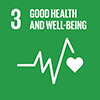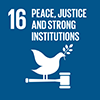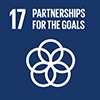Description/achievement of initiative
In 2011, Johnson & Johnson was the first private sector partner to join the Health 4+ (H4+) UN multi-agency collaboration. Together, J&J partnered with the H4+ to strengthen human resources to improve maternal and newborn survival in Ethiopia and Tanzania, two high burden, high priority countries. The program has been in operation for five years, focusing on three priority areas: Pre-service and in-service training for health workers, as well as targeted systems strengthening. Together with H4+ partners, we aim to create lasting improvements in maternal and newborn survival through training, technical assistance and mentoring of health care workers.
Implementation methodologies
The Human Resources for Maternal Health programming is focused on strategic, innovative efforts to improve maternal mortality immediately, as well as to build the medium and long term sustainable health worker programs and pipelines to deliver lifesaving services for the next decades of mothers-to-be. The project leverages government leadership, UN coordination and technical knowledge, and Johnson & Johnson strategy and advocacy skills. Activities focused on three broad areas: • Pre-service: Working to increase the number of students who will become the next health providers and the quality of the training all students receive. This includes both traditional programs (e.g. Nurse midwifery), as well as intensive task-shifting programs for clinical officers to become surgical officers. These efforts involve multi-year training and are investments in the long term health services of the nation.• In-service - Improving emergency obstetric care and midwifery clinical skills of those health workers currently delivering services at public facility level to save the lives of more women and newborns in distress. These activities create short and medium term impact in the health system if the health workers are supported to continually improve their skills - allowing Governments to make immediate improvements and to build confidence with communities.• Targeted systems strengthening - Strengthening the capacity of the health system to deliver quality health care worker training and support in order to reduce maternal mortality. These context specific efforts target key bottlenecks to augmenting and sustaining the gains made by individual activities to support health workers.
Arrangements for Capacity-Building and Technology Transfer
Working closely together, four-year context specific strategic activities were designed and implemented in the Federal Republic of Ethiopia, and the United Republic of Tanzania (with both Mainland and Zanzibar Governments). To date, the H4+ Human Resources for Maternal Health partnership has achieved milestones strengthening the quantity, quality, and impact of health workers on maternal and newborn survival. Highlights include: • Expanding the skills of health workers: Across Ethiopia and Tanzania, 96 existing health workers (clinical officers and anesthetists) received intensive 3-6 month practical training in order to begin providing cesarean section and other lifesaving services. • New health worker cadre: In Ethiopia, the Johnson & Johnson partnership supported 2 year masters degrees for 79 medical professionals to become integrated emergency surgical officers, >30% of the national cohort. They are redeployed and able to, for the first time, provide lifesaving cesarean support for women in distress. • Surveillance: In Ethiopia, J&J partnered with the Health Ministry, the WHO, and Options to support the development and launch of a maternal death surveillance and response strategy to improve maternal survival. Over 130 health workers that have been intensively trained have gone on to manage more than 1,800 deliveries. • Increased number of midwives: In Tanzania, the partnership facilitated 24 students from hard to reach areas to become nurse midwives, while also establishing 2 skills labs and practicum sites to improve nurse education quality at high-needs universities. • In Tanzania, targeted systems strengthening provided critical recommendations on the national human resource plan, teaching curriculum, and strengthening of in country exchanges. The number of facilities in Zanzibar, a Tanzanian archipelago, providing cesarean sections in emergency cases increased from 5-7, with more than 77 lifesaving cesareans completedWith continued mentorship, strategic partnership, and leadership from Governments, these programs, and the health workers themselves, will continue to drive significant change for pregnant women and their infants.
Coordination mechanisms/governance structure
The H4+ relies on strong multi-stakeholder partnerships that include civil society, the private sector, and local and national governing bodies, to provide coordinated and harmonized support to accelerate progress towards maternal and infant survival. The H4+ Human Resources for Maternal Health partnership worked directly with country governments, national universities and training centers in Ethiopia and Tanzania, the World Bank, and UN agencies, including the World Health Organization, UNFPA, UNICEF, and UNDP. WHO provides leadership for the project in Ethiopia, with UNFPA leading in Tanzania. In-country coordination with local implementers and between the UN agencies is the responsibility of the lead agency for the project. The Johnson & Johnson team has annual or bi-annual field visits to review progress and troubleshoot.Each country team, in coordination with Johnson & Johnson, developed a logic model and a monitoring and reporting plan including a list of indicators, and short, medium and long-term outputs and outcomes. Finally, the partners are committed to advocacy for maternal and newborn survival and the health workers who care for them. This work has been cited in H4+ updates, as well as in the film “A Dream Delivered”: https://youtu.be/qv7-8Vn04-4.
Partner(s)
Johnson & Johnson in collaboration with the Health 4+ (H4+): a joint UN initiative including the World Health Organization, UNFPA, UNICEF, UNDP, World Bank, Governments, and National Universities and training centers in Ethiopia and Tanzania.





 July/2015
July/2015
 July/2015
July/2015
 July/2015
July/2015
 July/2015
July/2015
 Time-frame: 2011 - 2015
Time-frame: 2011 - 2015